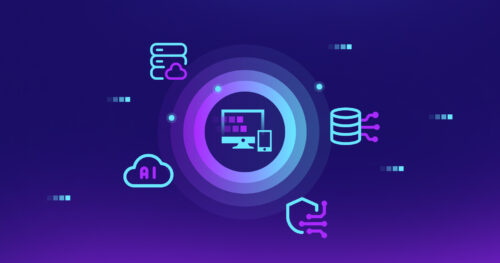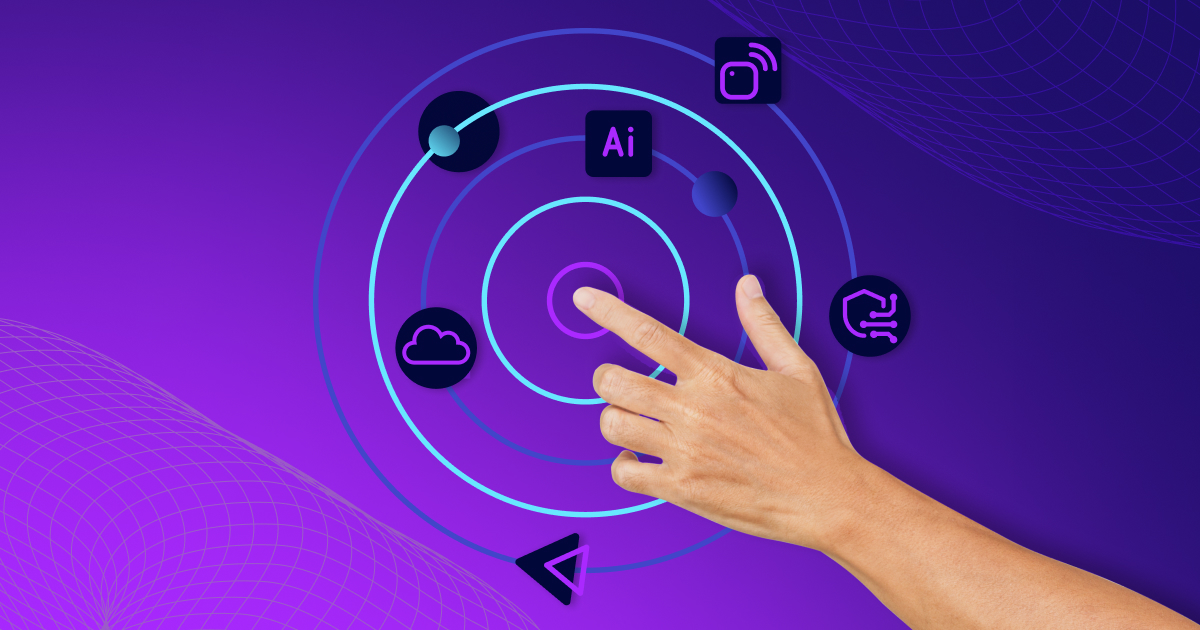In the dynamic digital landscape, software scalability and reliability are vital. Processing tons of data and serving thousands of users simultaneously, modern applications require a robust foundation. In this context, high-load systems hold a critical position, supporting the need for seamless operation under pressure – avoiding downtimes, saving costs, and improving customer experience. With strong expertise in high-load systems development, DigitalMara has prepared this guide explaining the basics of such systems and some development specifics.
When a website or application stops responding, it not only annoys the user but can also have serious consequences. This is true of both software for customers and internal software. A failure can mean loss of data and transactions, business operation disruption, legal issues, and reputational losses. Numerous studies have looked at the average cost of downtime for digital products, with results ranging from $2300 to $9000 per minute. The cost depends on the size of the business, industry vertical, and business model.
If your system is suffering from slow page loading, partial content loading, random errors, disconnections from the web server, database timeouts, etc., the reason may be that the system simply cannot withstand the load. And it’s time for modernization.
What are high-load systems?
The essence of high-load systems is in the title. These systems are designed to continuously process large amounts of data and a large number of requests. They have robust architecture, efficient resource management, and scalable and reliable infrastructure that enables consistent performance and fast response times. Also, these systems need efficient data management to optimize storage and processing and ensure data consistency, integrity, and security.
Architecture of high-loads
The success of any application largely depends on its architecture. Even if your project starts as a small system, you need to lay the foundations for its scalability, resilience, and fault tolerance. The same applies to system updates. Here are the key components of high-load systems:
- Microservices means dividing applications into smaller services responsible for specific functions. Each one can be independently deployed, scaled, and updated.
- Scalability is a fundamental aspect of high-load systems. Techniques like load balancing and auto-scaling enable the system to add or remove resources dynamically in response to changing demand.
- Caching techniques, such as in-memory caches and content delivery networks, make it possible to accelerate data retrieval and improve system performance.
- Security measures involve encryption, access control, authentication, and authorization implemented at various layers of the architecture to resist security threats and ensure data integrity and confidentiality.
- Application resilience is gained by using redundancy, replication, and failover mechanisms. Such methods ensure smooth operation in case of failures, minimize downtime, and ensure high availability.
- Distributed databases allow the distribution of data across multiple servers, enable parallel processing, and support fault tolerance and scalability. The data replication technique involves creating and maintaining copies of data across clusters. Other strategies include data skew mitigation, load balancing, and dynamic data redistribution.
Industries that need high-load systems
All industries that use digital products nowadays rely on high-load systems for their everyday operations.
- E-commerce platforms need to list a wide range of product items, process orders and transactions, collect customer data, and manage inventory. They must be resistant to an extra-large volume of traffic and simultaneous user interaction with the same product, and carry out payments.
- In finance, systems need to handle large volumes of financial data, manage complex financial transactions and customer accounts, and support online banking services and mobile payment applications. Special attention is paid to security, regulatory compliance, and fraud detection.
- Healthcare systems contain large amounts of data related to information about patients, diagnoses, tests, medications, medical images, and others. They optimize clinical workflows, automate tasks, and provide constant access to data. A prime example is the Electronic Health Records (EHR) system.
- Logistics software enables managing and optimizing various aspects of the supply chain, including warehouse, transportation, inventory, and orders. Systems handle large volumes of data and transactions, ensuring real-time visibility and accurate forecasting.
- In the HoReCa and travel industry, different types of booking platforms manage reservations, check out flight schedules and hotel accommodations, and make table reservations. It is necessary to ensure real-time availability updates, dynamic pricing, and efficient order and payment processing.
- Media is presented via video streaming, music streaming, and digital publishing. Systems must ensure uninterrupted content delivery, adaptive streaming, and personalized recommendations. They also support content management systems (CMS), digital rights management (DRM), and analytical tools to optimize content distribution and monetization strategies.
More examples include customer portals in telecommunications and civil services, e-learning platforms, social media platforms, messaging apps, gaming platforms, real-time monitoring of energy usage and grid performance, retail platforms, property management systems, various types of CRMs and ERPs, and many others.
How to develop high-load systems
Before starting development, it’s essential to define expected traffic volume, data processing needs, and performance requirements. The next step is to design the system architecture based on all these factors. The best approach that meets the requirements of scalability, flexibility, and reliability is cloud-based development.
Cloud technologies
Cloud technologies have the necessary functionality to build robust high-load systems. The size of computing power can be changed in the cloud, which allows developers to increase or decrease the amount of computing resources being employed as required, considering fluctuations in user traffic and workload intensity. Automatic scaling based on established rules allows the system to cope with the increase in traffic on its own. Response speed and performance are increased automatically during peak load periods.
Load balancing distributes all incoming traffic and ensures optimal use of resources, while it prevents the overloading of individual servers. This increases the reliability and fault tolerance of the system. In cloud systems, all content is delivered promptly and with low latency, regardless of the user’s geographical location.
One of the main benefits of using the cloud is serverless computing. Due to its inherent scalability, resources are automatically allocated and scaled based on demand, ensuring optimal performance and resource utilization even during peak traffic periods. This is quite cost-efficient, as there is no need to pay for the traditional server-based infrastructure. One pays only for resources consumed while executing functions. In addition, serverless computing provides increased efficiency and flexibility. Developers can quickly update features, add new ones, and respond to changing business requirements.
Cloud technologies open opportunities for advanced data analytics, enabling performance optimization and data-driven decision-making. High-load systems become powerful enough to store and handle massive volumes of data coming from various sources. Analyzing these data in real-time, one can gain insights into user behavior, system performance, and other trends, detect abnormalities, and make predictions. Such analytics are also well combined with AI algorithms and other visualization tools to go deeper.
Java
Java is a perfect choice for developing high-load systems. Its robust features match the need to build scalable and reliable systems. One of the main benefits is the support of multithreading and asynchronous programming. This means that developers can build systems capable of handling multiple requests simultaneously without compromising performance and stability. Java has an extensive ecosystem of libraries, frameworks, and tools specified for developing distributed systems with increasing workloads.
High-load systems built on Java run across various platforms and environments, from traditional on-premises servers to modern cloud infrastructure. They are flexible to adapt to changing deployment requirements and scale seamlessly to meet growing demands. This language’s robust error handling and fault tolerance ensure that the system can recover from failures and errors without compromising user experience or data integrity.
A very significant factor is that Java is compatible with cloud platforms and services such as Amazon Web Services (AWS), Google Cloud Platform (GCP) and Microsoft Azure, providing smooth integration with cloud resources and functionality.
Final words
High-load systems represent a scalable and reliable software architecture, allowing businesses to easily meet the needs of modern applications that require a large amount of data and user requests. Investing in development or modernization is not just a choice, but a necessity. With the right tools, techniques, and best practices, it’s possible to build systems that not only meet modern challenges but also open the way for future innovation and growth.
DigitalMara has the skills and knowledge to develop high-load systems for companies from a variety of industries. We can build a new system from scratch, or upgrade or rebuild your legacy system. Our software is reliable, efficient, and scalable, with the ability to handle large volumes of data requests and backend computations.
Choose our IT staff augmentation or custom software development services.


































